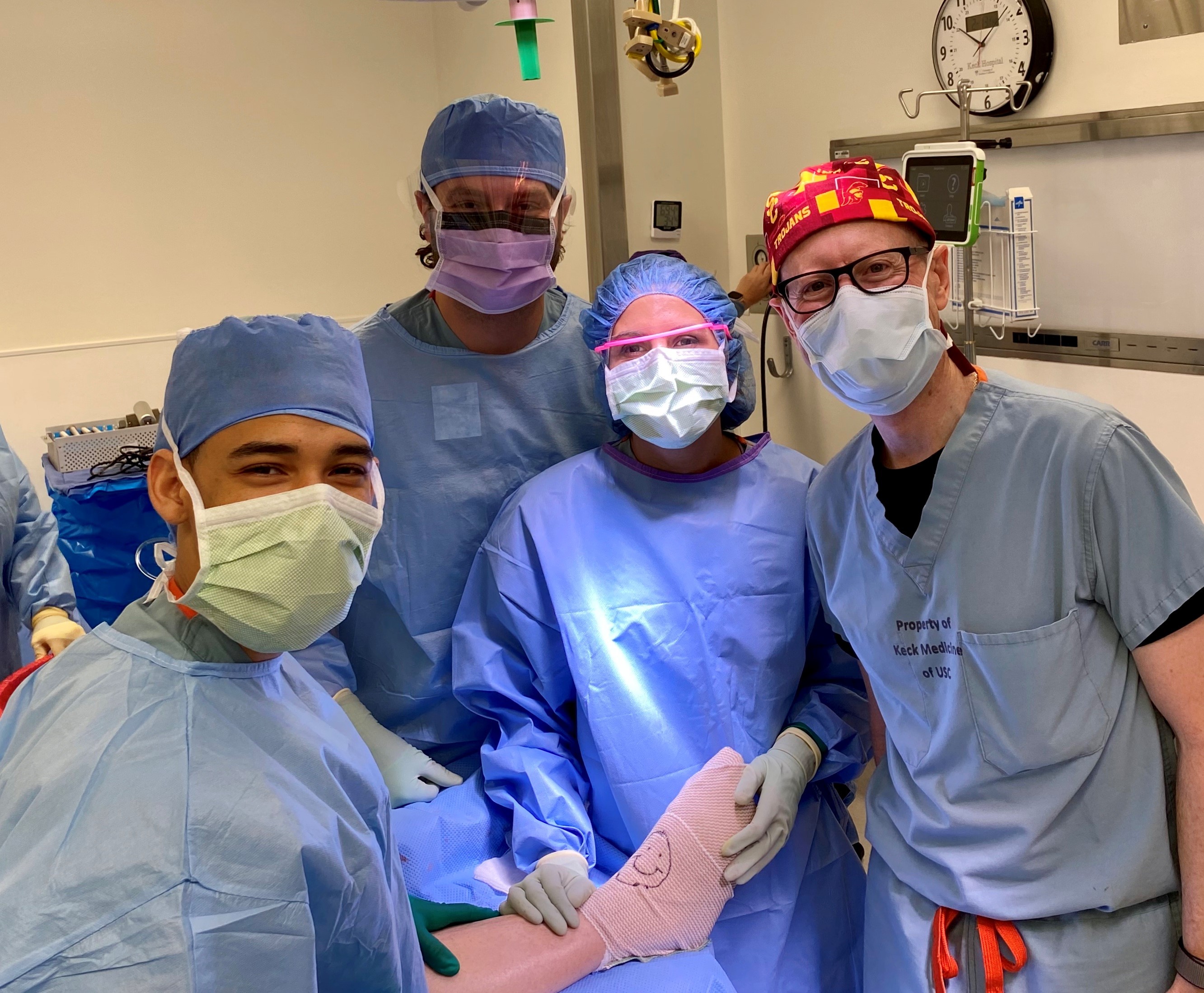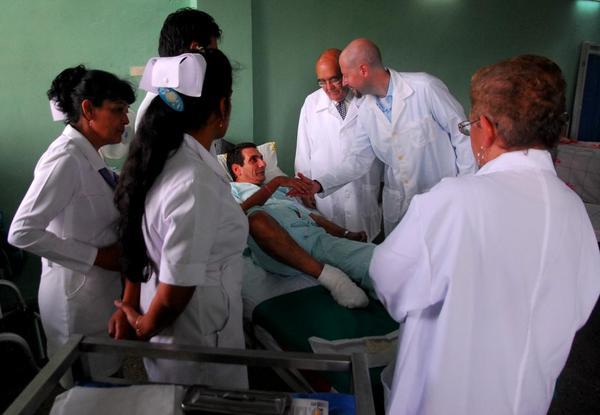Saving Limbs and Lives: USC Investigator Assembles Novel Triage and Treatment Team to Prevent Amputation among Diabetes Patients
The Southern California Clinical and Translational Science Institute (SC CTSI) championed a pilot study to develop a multidisciplinary "hot foot line" team. The team is designed to rapidly assess and treat diabetic patients with foot ulcers to preserve limbs and prevent amputation.
Diabetes is one of the country's most pressing health threats, affecting approximately 32 million Americans. Up to one-third will develop a foot ulcer, which are at high risk of infection. In these situations, amputation is frequently offered as the best treatment option. Worldwide, millions more diabetic patients undergo amputation—an estimated one every 20 seconds.

The loss of a foot or leg is traumatic enough in itself, with obvious impacts on everyday activity. But the consequences of amputation go beyond quality of life. When a diabetes patient loses a foot or leg, their five-year mortality rate soars to 50 percent, exceeding that of all but the worst cancers, according to David G. Armstrong, DPM, MD, PhD, Professor of Surgery at the Keck School of Medicine of USC.
Many patients with diabetic foot ulcers show up in the emergency department—rarely the best place to treat complex problems such as foot ulcers.
"There's a massive number of patients in the United States at high risk for amputations, but we think many of these amputations are preventable," said Armstrong.
Preventing amputations is the aim of a novel, team-based clinical triage and treatment system that Armstrong has been developing with colleagues in Southern California since joining the USC faculty in late 2017.

His so-called "hot foot line" team brings together in a single program all the specialties involved in treating diabetic foot ulcers—from vascular and podiatric surgery, to endocrinology, to nursing, all the way to specialized shoe and orthotic construction—to save limbs and extend the lives of their patients. These teams have been nicknamed “Toe and Flow” because of the tight combination of podiatric and vascular surgery on one service.
Armstrong had helped pioneer the development of such limb-preserving Toe and Flow teams in Arizona, Illinois, Texas, England and other countries. In fact, it was this work that caught the attention of the USC Department of Surgery, which recruited him to the Keck faculty to adapt the approach for Los Angeles County.
However, health care institutions and resources and the communities they serve are different in every region, and complex programs such as the hot foot team must be adjusted for their specific setting, explained Armstrong.
"For example, Los Angeles County has a population of 10 million, and many people with diabetic foot ulcers," said Armstrong. "But it's really a zip code lottery if you look at amputation risk, with a tenfold variation in amputation rate depending on where you live."
As extraordinary as these data are, Armstrong says the hot foot teams can be a game-changer.
"The bottom line is that the variation in these amputation rates has as much to do with physician coordination as it does with socio-economic factors like access and ethnicity," said Armstrong. "We have really good data from other regions that show that hot foot teams can have a profound reduction on diabetes-related amputation rates."
Research leadership at the Southern California Clinical and Translational Science Institute (SC CTSI), including SC CTSI director Thomas A. Buchanan, MD, wanted to see the hot foot team approach tested, implemented and iterated in the Los Angeles area.
Buchanan—who is also Chief of the Division of Endocrinology and Diabetes in the Keck Department of Medicine—worked with Armstrong and his co-investigators at USC and UCLA, recommending their ultimately successful application for pilot support from the DHS-CTSI Implementation Science Awards program. The award program is a partnership of the UCLA Clinical and Translational Science Institute, the SC CTSI and the Los Angeles County Department of Health Services (LAC DHS) designed to promote interventions and enhance the quality, efficiency and patient-centeredness of care provided by the LAC DHS.
After winning the Implementation Science Award grant last year, Armstrong and his co-Principal Investigator—Gregory A. Magee, Assistant Professor of Clinical Surgery at Keck Medicine of USC—developed a hot foot team for a pilot study at Rancho Los Amigos National Rehabilitation Center, in Downey, Calif., an LAC DHS hospital that happens to be one of the largest rehabilitation centers in the country.
The hot foot limb salvage teams physically work together on the same hall, pulling each other into patient rooms for quick consults that speed decision-making and treatment—and offer the best chance to save limbs. Triage is conducted on the spot and treatment can be implemented quickly, a particularly valuable aspect of the hot foot team approach. A podiatric surgeon may reconstruct an injured foot, working in close coordination with a vascular surgeon operating to improve blood flow.
In concrete terms, Armstrong explained, the successful team must address everything from the coordination of funding sources to the organization of operating rooms and equipment.
"It can be complicated for the health care team, but care for the patient is simplified as a result of the rapid decision-making and intervention," said Armstrong. "Just as they say in stroke care, time is tissue."

Their 24-month pilot study will compare outcomes between patients at institutions with and without the hot foot limb salvage teams. Lessons learned will inform the establishment of teams across the DHS system, and ultimately throughout the country.
The study is not complete, but Armstrong said the benefits are clearly apparent: "Implementation of the hot foot line program is, as we speak, working to actively reduce time to care and risk for amputation amongst people we serve in the DHS and beyond."



